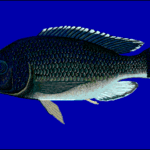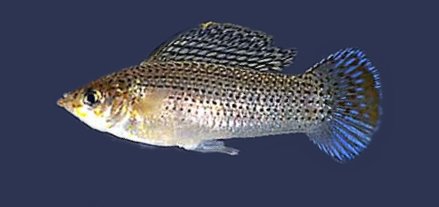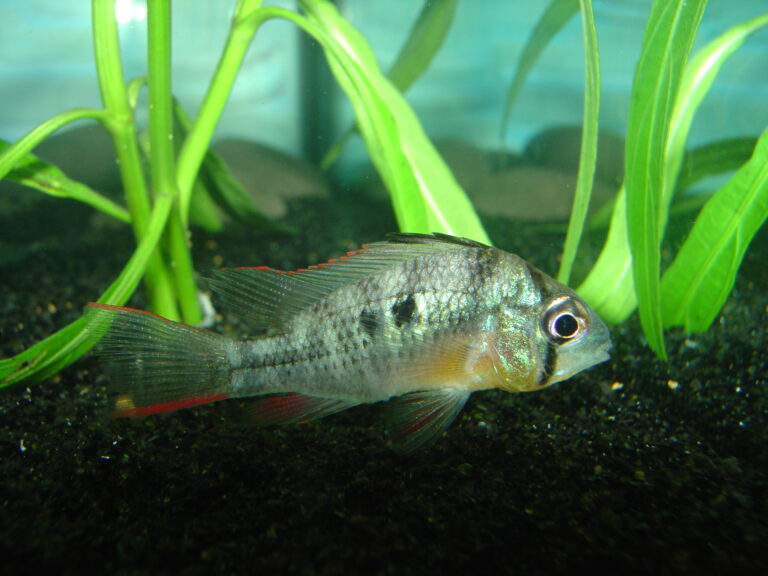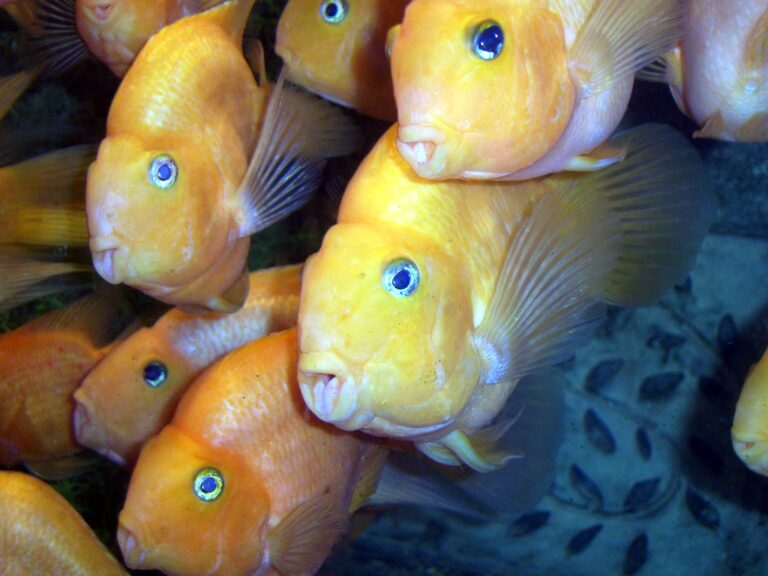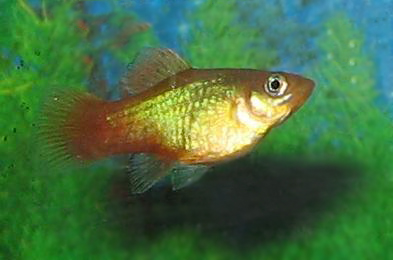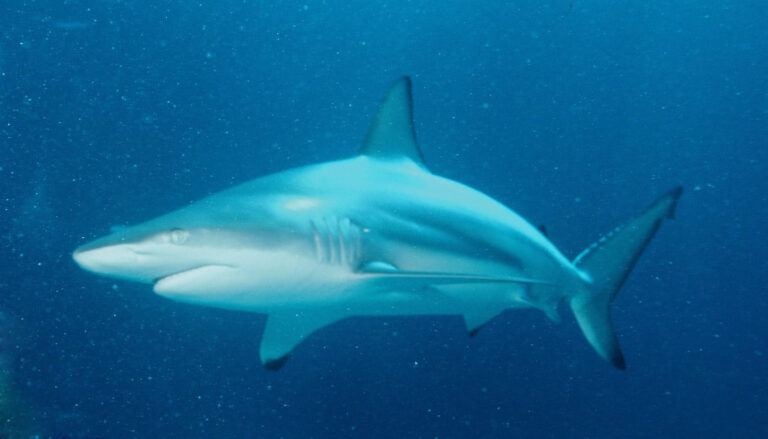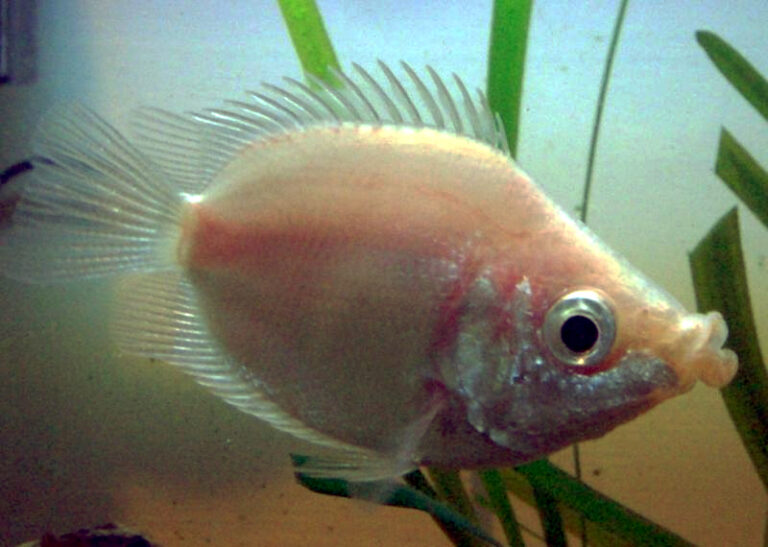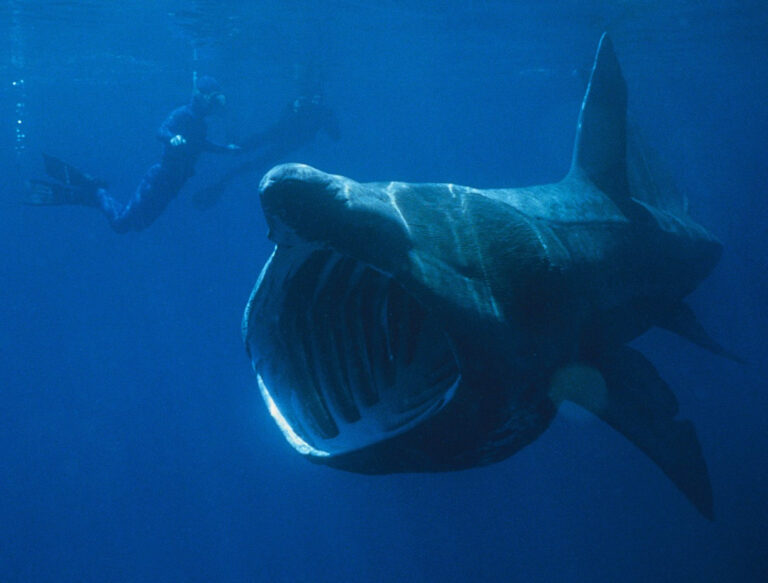Silky Shark
By Ryan Maron | Last Modified: July 8, 2025
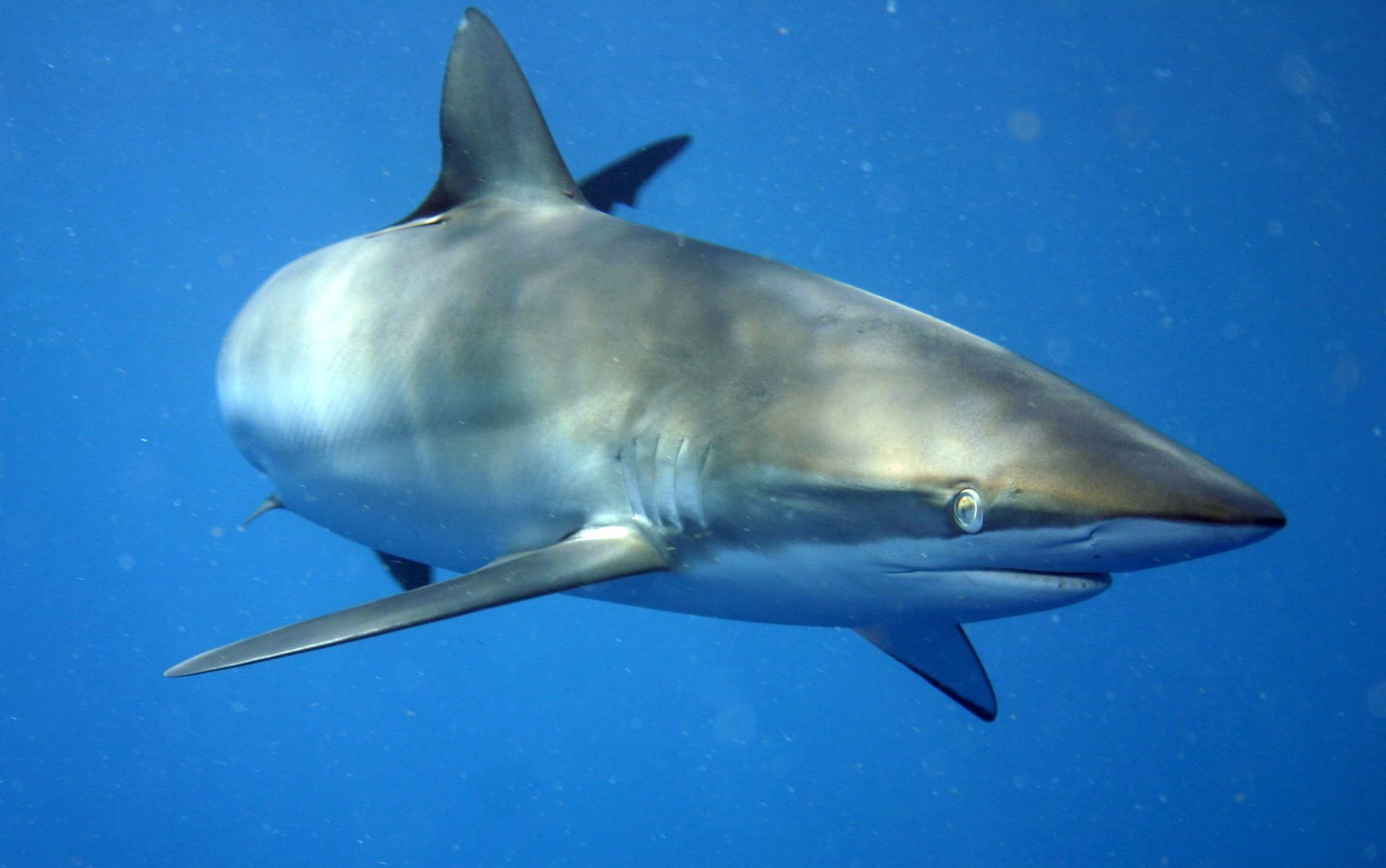
The Silky Shark represents one of the most widespread and ecologically significant requiem sharks in tropical and subtropical waters worldwide. Known scientifically as Carcharhinus falciformis, this pelagic predator derives its common name from the remarkably smooth texture of its skin, which distinguishes it from many other shark species. As a highly migratory apex predator, the Silky Shark plays a crucial role in maintaining the balance of oceanic food webs, regulating populations of smaller fish and cephalopods across vast expanses of open ocean. This species faces mounting conservation challenges due to extensive commercial fishing pressure, making it one of the most frequently caught sharks in international fisheries operations.
| Feature | Details |
|---|---|
| Common Name | Silky Shark |
| Scientific Name | Carcharhinus falciformis |
| Family | Carcharhinidae |
| Typical Size | 200-250 cm (6.5-8.2 ft), 18-52 kg |
| Habitat | Pelagic oceanic waters |
| Diet | Fish, squid, crustaceans |
| Distribution | Circumtropical waters |
| Conservation Status | Vulnerable |
Taxonomy & Classification
The Silky Shark belongs to the family Carcharhinidae, commonly known as requiem sharks, which represents the largest family of modern sharks. First described by Johann Jakob Kaup in 1837, Carcharhinus falciformis derives its specific epithet “falciformis” from the Latin words “falx” (sickle) and “forma” (shape), referring to the distinctive sickle-shaped dorsal fin that characterizes this species. Within the genus Carcharhinus, the Silky Shark is most closely related to the Bull Shark and other large-bodied requiem sharks.
Recent phylogenetic studies have revealed that Carcharhinus falciformis represents a relatively ancient lineage within the genus, with genetic divergence estimates suggesting separation from its closest relatives approximately 15-20 million years ago. The species exhibits minimal genetic variation across its global range, indicating high gene flow facilitated by its highly migratory nature. Taxonomists recognize no subspecies of Silky Shark, though subtle morphological variations exist between populations in different ocean basins.
The classification hierarchy places the Silky Shark within the order Carcharhiniformes, which encompasses ground sharks and represents the most diverse group of modern sharks. This taxonomic position reflects shared anatomical features including the presence of a nictitating membrane, two dorsal fins, and five gill slits positioned laterally on the head.
Physical Description
The Silky Shark possesses a streamlined, fusiform body shape perfectly adapted for efficient swimming in open ocean environments. Adult specimens typically reach lengths of 200-250 centimeters, with maximum recorded lengths approaching 350 centimeters. The species exhibits sexual dimorphism, with females generally attaining larger sizes than males. Body weight ranges from 18-52 kilograms for adults, though exceptional individuals may exceed 80 kilograms.
The most distinctive feature of the Silky Shark is its remarkably smooth skin, created by densely packed, small dermal denticles that give the species its common name. The dorsal coloration ranges from dark gray to bronze-brown, gradually transitioning to white or pale yellow on the ventral surfaces. This countershading pattern provides effective camouflage in the open ocean, making the shark difficult to detect from both above and below.
The first dorsal fin is relatively small and positioned behind the pectoral fins, while the second dorsal fin is notably smaller and located above the anal fin. The pectoral fins are long and narrow, measuring approximately 18-20% of the total body length. The caudal fin displays the typical heterocercal shape common to sharks, with the upper lobe significantly longer than the lower lobe. The teeth are triangular and serrated, perfectly designed for cutting through the flesh of prey species.
Silky Sharks possess large, circular eyes equipped with a nictitating membrane for protection during feeding. The snout is moderately pointed, and the mouth contains 14-16 tooth rows in the upper jaw and 13-15 rows in the lower jaw. These physical characteristics combine to create a highly efficient pelagic predator capable of pursuing fast-moving prey in three-dimensional space.
Habitat & Distribution
The Silky Shark inhabits tropical and subtropical waters across all major ocean basins, making it one of the most widely distributed shark species globally. This cosmopolitan distribution encompasses the Atlantic, Pacific, and Indian Oceans, with populations occurring between approximately 40°N and 40°S latitude. The species demonstrates a strong preference for pelagic environments, typically found in waters deeper than 200 meters, though individuals may venture into shallower coastal areas, particularly around oceanic islands.
Temperature represents a critical habitat parameter for Silky Sharks, with the species showing a strong association with waters warmer than 23°C. This thermal preference restricts their distribution to tropical and warm temperate regions, where they occupy the epipelagic and upper mesopelagic zones. Depth preferences vary with life stage, with juveniles often found in shallower waters near continental shelves, while adults inhabit deeper oceanic regions.
The species exhibits complex movement patterns influenced by seasonal temperature variations, prey availability, and reproductive cycles. Satellite tagging studies have revealed extensive migrations covering thousands of kilometers, with some individuals crossing entire ocean basins. These movements often follow ocean currents and thermal fronts, which concentrate prey species and create favorable feeding conditions.
Silky Sharks demonstrate a particular affinity for areas of high productivity, including upwelling zones, seamounts, and continental shelf edges. These regions support abundant prey populations and provide optimal foraging opportunities. The species also associates with floating objects, including natural debris and artificial fish aggregating devices, which attract diverse prey species and create localized feeding opportunities.
Diet & Feeding Behavior
The Silky Shark functions as an opportunistic apex predator with a diverse diet reflecting the species’ adaptability to varying prey availability across its extensive range. Primary prey items include pelagic fish species such as tunas, mackerels, sardines, and flying fish, which typically comprise 60-70% of the diet by volume. Cephalopods, particularly squid, represent another significant dietary component, accounting for 20-30% of prey consumption. Crustaceans, including pelagic shrimp and crab larvae, supplement the diet, especially among juvenile individuals.
Feeding behavior exhibits both solitary and group dynamics, with Silky Sharks capable of coordinating feeding activities when prey density is high. The species employs various hunting strategies, including high-speed pursuit of individual prey items and cooperative feeding on schooling fish. Their streamlined body shape and powerful swimming abilities enable them to achieve burst speeds exceeding 50 kilometers per hour during prey pursuit.
Diel feeding patterns show increased activity during dawn and dusk hours, corresponding with the vertical migration of prey species. During these periods, Silky Sharks often follow prey to shallower depths, sometimes approaching the surface to feed on concentrated schools of fish. The species demonstrates remarkable prey detection capabilities, utilizing both visual and electroreception to locate potential food sources across vast oceanic distances.
Seasonal variations in diet composition reflect changes in prey availability and distribution patterns. During spawning aggregations of prey species, Silky Sharks may concentrate in specific areas to exploit these temporary food sources. The species’ ability to fast for extended periods allows it to traverse nutrient-poor oceanic regions while searching for productive feeding areas.
Behavior & Adaptations
Silky Sharks exhibit complex behavioral adaptations that enhance their survival in the challenging pelagic environment. Their highly migratory nature represents one of the most remarkable aspects of their behavior, with individuals capable of covering distances exceeding 2,000 kilometers during seasonal movements. These migrations are driven by temperature preferences, prey availability, and reproductive requirements, demonstrating sophisticated navigation abilities that remain poorly understood.
Social behavior varies significantly with environmental conditions and life stage. While generally considered solitary, Silky Sharks frequently aggregate around food sources, forming loose associations that may persist for several days. These aggregations can include dozens of individuals and often occur in conjunction with other pelagic species, including Blue Sharks and various tuna species.
The species demonstrates remarkable physiological adaptations for life in the open ocean. Their efficient swimming mechanics, facilitated by the streamlined body shape and powerful caudal fin, minimize energy expenditure during long-distance travel. Counter-current heat exchange systems in the circulatory system help maintain optimal body temperature in varying thermal environments.
Silky Sharks possess highly developed sensory systems adapted for detecting prey and navigating in the three-dimensional oceanic environment. Their lateral line system can detect water movements from struggling prey or approaching predators at distances up to several body lengths. The electroreception system, centered in the ampullae of Lorenzini, enables detection of bioelectric fields generated by living organisms, providing a significant advantage in murky water or during night feeding.
Territorial behavior is minimal due to the vast nature of their habitat, though individuals may establish temporary feeding territories around concentrated prey sources. The species shows remarkable site fidelity to productive feeding areas, with some individuals returning to the same locations across multiple years.
Reproduction & Life Cycle
The Silky Shark exhibits a viviparous reproductive strategy with a gestation period of approximately 12 months, representing one of the longer pregnancy durations among requiem sharks. Sexual maturity occurs at different ages for males and females, with males typically reaching maturity at 6-7 years of age and females at 7-9 years. This delayed maturity, combined with relatively low reproductive output, makes the species particularly vulnerable to overexploitation.
Mating behavior involves complex courtship rituals that occur primarily during warmer months in tropical waters. Males pursue females using a combination of physical contact and chemical communication, with successful mating often resulting in visible bite marks on the female’s body. The species demonstrates a polygamous mating system, with both males and females potentially mating with multiple partners during the breeding season.
Females typically produce 2-14 pups per litter, with litter size generally increasing with female body size. The embryonic development follows a typical elasmobranch pattern, with initial yolk sac nutrition transitioning to placental transfer during later stages of development. This placental connection provides developing embryos with essential nutrients and removes metabolic waste products.
Nursery areas for juvenile Silky Sharks are typically located in coastal waters with depths ranging from 50-200 meters. These areas provide protection from larger predators and abundant prey resources necessary for rapid growth. Young sharks remain in nursery areas for the first 2-3 years of life before gradually transitioning to more pelagic lifestyles.
The reproductive cycle operates on a 2-3 year interval, with females requiring extended recovery periods between pregnancies. This low reproductive frequency, combined with the species’ late maturity, results in a relatively low population growth rate that makes recovery from overfishing particularly challenging.
Predators & Threats
Adult Silky Sharks face relatively few natural predators due to their large size and formidable defensive capabilities. However, larger shark species, including Tiger Sharks and Great White Sharks, may occasionally prey upon smaller individuals. Killer whales represent another potential threat, particularly to juveniles and subadults in areas where these marine mammals are common.
Juvenile Silky Sharks face a broader range of predation risks, including various shark species, large bony fish, and marine mammals. The species’ early life stages are particularly vulnerable during the first year when individuals are small and lack the swimming speed and defensive capabilities of adults. Mortality rates during the juvenile period can exceed 50% annually in some populations.
Anthropogenic threats represent the most significant challenge to Silky Shark populations globally. Commercial fishing operations, particularly those targeting tunas, frequently catch Silky Sharks as bycatch. The species’ association with tuna schools and their tendency to investigate fishing vessels make them particularly susceptible to capture in purse seine and longline fisheries. An estimated 500,000-1,000,000 Silky Sharks are caught annually in commercial fishing operations worldwide.
Habitat degradation poses an increasing threat, particularly in coastal nursery areas where development and pollution impact water quality. Climate change effects, including ocean warming and acidification, may alter prey distribution patterns and force sharks to expand their ranges or modify their behavior patterns.
The species’ fins are highly valued in international markets, making them targets for both directed fishing and retention when caught as bycatch. This economic incentive has driven intensive fishing pressure on Silky Shark populations throughout their range, contributing to documented population declines in several regions.
Conservation Status
The International Union for Conservation of Nature (IUCN) classifies the Silky Shark as Vulnerable on the Red List of Threatened Species, reflecting documented population declines across significant portions of the species’ range. This classification was updated in 2017 following comprehensive assessments that revealed substantial fishing pressure and resulting population impacts.
Population assessments indicate declines ranging from 30-70% in various regions over the past three decades. The Atlantic population has experienced particularly severe declines, with some estimates suggesting reductions exceeding 60% since the 1980s. Pacific populations show similar trends, though data quality varies significantly across different management regions.
The species is listed in Appendix II of the Convention on International Trade in Endangered Species (CITES), which regulates international trade and requires export permits for commercial shipments. This listing provides some protection against overexploitation but relies on effective implementation by member nations.
Several regional fisheries management organizations have implemented conservation measures for Silky Sharks, including fishing quotas, size limits, and seasonal closures. The Inter-American Tropical Tuna Commission (IATTC) has established specific regulations for Silky Shark bycatch in tuna fisheries, including requirements for safe release practices and gear modifications to reduce capture rates.
National conservation efforts vary significantly across the species’ range. Some countries have implemented complete fishing bans, while others maintain limited quotas or seasonal restrictions. The effectiveness of these measures depends heavily on enforcement capabilities and stakeholder compliance.
Research priorities include improved population assessments, enhanced understanding of migration patterns, and development of fishing gear modifications to reduce bycatch rates. Satellite tagging programs have provided valuable insights into the species’ movement ecology, informing marine protected area design and management strategies.
Human Interaction
Silky Sharks have maintained a complex relationship with human activities for centuries, primarily through commercial fishing operations and, more recently, ecotourism initiatives. The species’ widespread distribution and association with commercially valuable fish species have made them frequent subjects of human encounter across tropical oceans worldwide.
Commercial fisheries represent the primary form of human-Silky Shark interaction, with the species caught both as target species and bycatch in various fishing operations. Longline fisheries targeting tunas and swordfish frequently capture Silky Sharks, while purse seine operations encounter them in association with tuna schools. The species’ fins command high prices in international markets, particularly in Asia, creating economic incentives for retention even when caught incidentally.
Recreational fishing for Silky Sharks occurs primarily in offshore waters, with the species valued for its fighting ability and size. Catch-and-release practices have become increasingly common as awareness of conservation issues has grown. Sport fishing tournaments have implemented specific rules and guidelines for Silky Shark handling to maximize post-release survival rates.
Ecotourism interactions include diving operations in areas where Silky Sharks are commonly encountered, such as around oceanic islands and seamounts. These activities provide economic alternatives to fishing and create stakeholder incentives for conservation. However, proper management protocols are essential to minimize disturbance to natural behavior patterns.
Attacks on humans are extremely rare, with the species showing generally non-aggressive behavior toward divers and swimmers. When encounters occur, they typically involve curious investigation rather than aggressive behavior. The species’ pelagic lifestyle means most human encounters occur in offshore waters rather than coastal swimming areas.
Educational programs and research initiatives have increased public awareness of Silky Shark ecology and conservation needs. Citizen science projects, including shark tagging and reporting programs, have provided valuable data while engaging the public in conservation efforts.
Interesting Facts
The Silky Shark’s skin contains approximately 40,000 dermal denticles per square centimeter, creating one of the smoothest surfaces found among shark species. This remarkable density of microscopic tooth-like structures reduces drag during swimming and contributes to the species’ exceptional swimming efficiency.
Individual Silky Sharks can dive to depths exceeding 500 meters, though they typically remain in the upper 200 meters of the water column. Their deepest recorded dive reached 1,286 meters, demonstrating remarkable physiological adaptations for pressure tolerance and oxygen conservation.
The species exhibits one of the longest migration distances recorded for any shark, with satellite tracking revealing round-trip journeys exceeding 4,000 kilometers. These migrations often follow ocean currents and thermal boundaries, suggesting sophisticated navigation abilities that may involve magnetic field detection.
Silky Sharks possess remarkable longevity, with maximum age estimates ranging from 20-25 years based on vertebral analysis. This relatively long lifespan, combined with slow growth rates, contributes to the species’ vulnerability to overfishing and slow recovery potential.
The species demonstrates unusual associations with pilot whales in some regions, with sharks following whale pods and potentially benefiting from disturbed prey or feeding opportunities. This relationship represents one of the few documented inter-species associations involving large pelagic sharks.
Silky Sharks exhibit remarkable site fidelity to productive feeding areas, with some individuals returning to the same seamounts or oceanic features across multiple years. This behavior suggests sophisticated spatial memory and navigation capabilities that remain poorly understood.
The species’ electroreception system is so sensitive that it can detect the bioelectric fields generated by prey fish at distances up to one meter, providing a significant advantage during night feeding or in turbid water conditions.
Frequently Asked Questions
How dangerous are Silky Sharks to humans?
Silky Sharks pose minimal danger to humans, with extremely rare documented attacks. The species typically exhibits curious but non-aggressive behavior toward divers and swimmers. Their pelagic lifestyle means most encounters occur in offshore waters rather than coastal swimming areas where most shark-human interactions happen.
Why are Silky Sharks important to ocean ecosystems?
As apex predators, Silky Sharks play a crucial role in maintaining oceanic food web balance by controlling populations of smaller fish and cephalopods. Their removal from ecosystems can cause cascading effects, including increases in prey species that may then overconsume lower trophic levels, ultimately disrupting entire marine communities.
How fast can Silky Sharks swim?
Silky Sharks can achieve burst speeds exceeding 50 kilometers per hour during prey pursuit, making them among the fastest swimming shark species. Their streamlined body shape and powerful caudal fin enable efficient long-distance cruising at speeds of 3-5 kilometers per hour during normal activities.
What is being done to protect Silky Sharks?
Conservation measures include CITES trade regulations, regional fisheries management quotas, gear modifications to reduce bycatch, and marine protected areas. Research programs using satellite tagging provide data for management decisions, while international cooperation efforts aim to coordinate conservation across the species’ global range.
Conclusion
The Silky Shark stands as one of the ocean’s most remarkable apex predators, embodying the beauty and complexity of pelagic marine ecosystems. Despite their widespread distribution and ecological importance, these magnificent creatures face unprecedented challenges from human activities, particularly commercial fishing operations that have resulted in significant population declines worldwide. Understanding and protecting Silky Sharks requires continued research, international cooperation, and sustained conservation efforts that recognize their vital role in maintaining healthy ocean ecosystems for future generations.
Share The Article:
More Fish Species:
-
Molly Fish
The Molly Fish represents one of the most adaptable and ecologically significant freshwater species in tropical and subtropical regions…
-
Bolivian Ram
The Bolivian Ram (Mikrogeophagus altispinosus) stands as one of South America’s most captivating cichlid species, representing a prime example…
-
Blood Parrot Cichlid
The Blood Parrot Cichlid stands as one of the most distinctive and controversial specimens in contemporary aquarium culture. This…
-
Celestial Eye Goldfish
The Celestial Eye Goldfish represents one of the most distinctive varieties within ornamental aquaculture, known scientifically as Carassius auratus….
-
Sunset Platy
The Sunset Platy (Xiphophorus maculatus), commonly known as the Southern Platyfish, represents one of the most popular and recognizable…
-
Jaguar Cichlid
The Jaguar Cichlid stands as one of Central America’s most formidable predatory fish, renowned for its impressive size, aggressive…
Discover
-
Beluga Fishing: Techniques That Actually Work (Not Theory)
When it comes to beluga fishing, there’s a world of difference between what you read in theory and what…
-
Blacktip Shark
The Blacktip Shark (Carcharhinus limbatus) stands as one of the most recognizable and ecologically significant predators in tropical and…
-
Master Deep Ocean Fishing: Proven Methods for Massive Catches
There’s something almost magical about heading far offshore, where the continental shelf drops away and you’re floating above thousands…
-
Shore Fishing for Beginners: 5 Odd Techniques That Actually Work
I’ve spent more mornings than I can count standing on the shores of Michigan lakes watching boats drift by,…
-
Best Saltwater Fishing Rigs in 2025
As someone who’s spent over three decades casting lines into just about every body of water I could find,…
-
Winter Fishing Tips: 7 Cold-Weather Tactics Successful Anglers Use
Most anglers pack away their gear when the temperature drops, but the dedicated few know something the others don’t:…
Discover
-
Kissing Gourami
The Kissing Gourami (*Helostoma temminckii*) stands as one of the most distinctive and recognizable freshwater fish species in both…
-
Rummy Nose Tetra
The Rummy Nose Tetra stands as one of the most distinctive and recognizable small freshwater fish species in South…
-
Basking Shark
The Basking Shark stands as one of the ocean’s most magnificent gentle giants, representing the second-largest fish species on…
-
Ranchu Goldfish
The Ranchu Goldfish represents one of the most distinctive and culturally significant ornamental fish varieties in the aquatic world….
-
East Coast Surf Fishing: Targeting Striped Bass and Bluefish from Shore
When I first tried East Coast surf fishing nearly 15 years ago, I was absolutely terrible at it. I…
-
Florida Keys Tarpon Fishing: Seasonal Guide and Rigging Tips
I still remember my first tarpon hookup in the Florida Keys like it happened yesterday, not 17 years ago….

